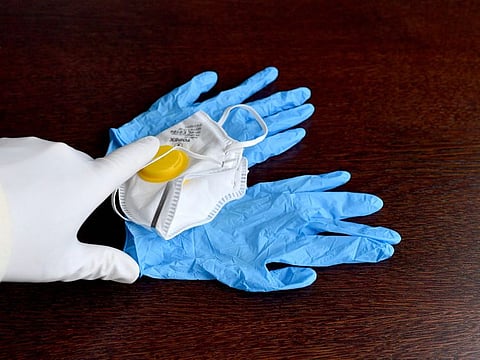Coronavirus: How different people in the same UAE household react
To panic or not? The answer depends on who you ask

The morning began with a whirlwind of pain; she was seeing red. The house was on high alert. The time had come to begin hoarding and no one seemed to understand the importance of what was happening outside our four walls. The world was imploding. The virus – a coronavirus – was sweeping across nations, without discrimination inducing respiratory distress on the old, the infirm, people with any immunity trouble. In the UAE, the numbers are still within the double digits, just 74, and so are the recoveries, 15, but around the world, the infectious are heading towards a majority. Entire cities are on lockdown. Everyday life, as we know it, has changed.
Mother, middle aged and super fit, was upset. The boys had lost the list of essentials she had written down; toilet paper and soap and sanitizer; all the things that are causing tiffs in stores – and homes – in places as far as the US and Australia. There are now options for 40kg bags of rice, buying in bulk is becoming a trend. Somethings you can’t find in online shops – all sold-out. There’s reason, not madness in what is happening, she said.
Also Read: Why coronavirus does not scare me
What’s worrying is my mother is a woman who believes in sound logic and numbers, and it takes more than a few spooky news bits to scare her – I know, I’ve tried. So when she rattled off figures of the infected and ‘zombie’ virus details – I spooked…
Until I walked over to my yawning brother who had another laundry list of issues to air. For one he had been woken up for an infection that might be contagious, but wasn’t as fatal as so many other things. “It’s not like Ebola,” he snapped, “it’s not even as bad as the flu.” For my mother – in her 60s, he prescribed a good dose of Vitamin C and other immunity-boosting foods to keep the sickness at bay.
[The facts: as of Wednesday night, the World Health Organisation had declared the COVID-19 outbreak a pandemic. Flu, say the studies, kill 0.1 per cent of its patients. COVID, explained Francois Balloux, Professor of Computational Systems Biology at University College London, in an AFP report: "[The] fatality rates of COVID-19...is around two per cent on average, which is about 20 times higher than for the seasonal flu lineages currently in circulation." That said the residents of Wuhan - the original epicentre of the outbreak - seemed to be recouperating nicely; they were getting ready to head back to work on March 11. ]
It’s a see-saw moment at home – a microcosmic look at the strains of belief stretching over society – to panic or not to panic, that is the question. To build immunity – how many glasses of orange juice or vitamin C after all can you drink without your stomach protesting in loud grumbles? To build stamina – but not go to the gym, after all sweat from an infected person is – well- infectious.
Also Read: Can Vitamin C intake ward off coronavirus?
Unless you carry hand sanitizer everywhere. Which is a great plan until you realise that using a spirit-based cleaning system so enthusiastically is leaving your hands dry, flaky and - if you are vain, this is a big one - looking prune-y.
So you carry moisturizer and hurt and heal and hurt and heal. Or seclude yourself at home, if you are fond of the surroundings and your office shall allow it. Then props up another question though, if they don’t need you to be on the premises while there’s an emergency, will they consider you dispensable once the ‘trouble’ is over? Or maybe remote working is just another step in evolution. If you survive, of course, for first there’s the apocalypse to think about.
It’s not just the tumble of information, but personality tussles that one must contend with. On the one side a panicker, on the other, someone nonchalant.
Where do I sit? Comfortably, on the fence. Ready with an extra squeeze of sanitizer and hand cream – but leaving (most of) the fear at home.
Sign up for the Daily Briefing
Get the latest news and updates straight to your inbox







